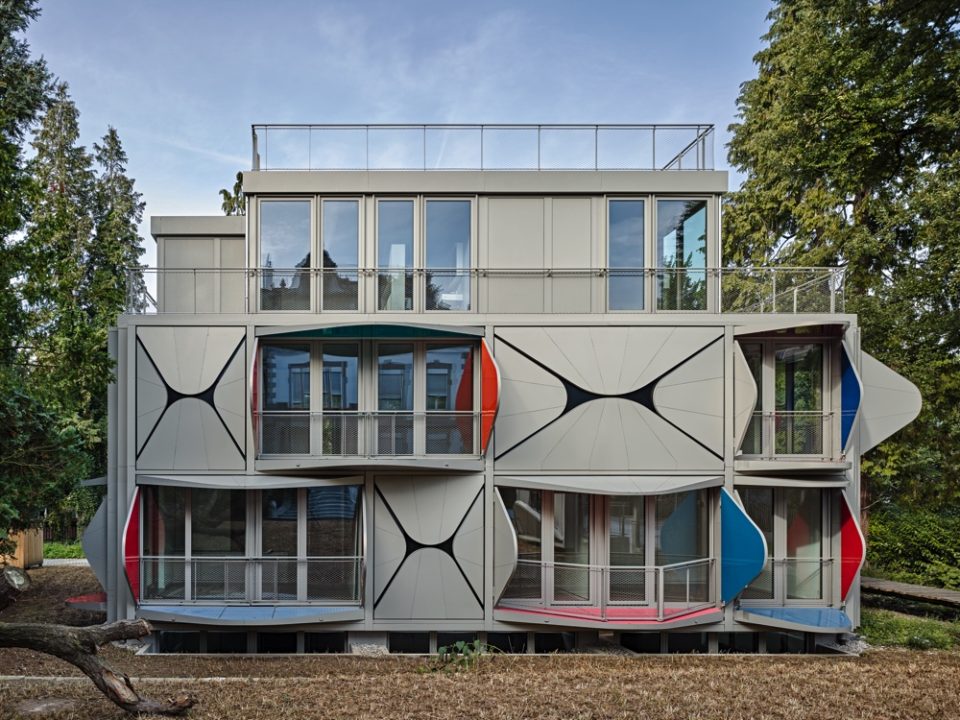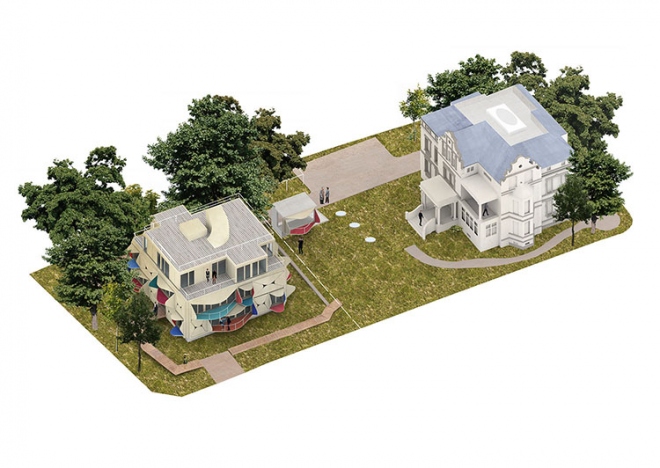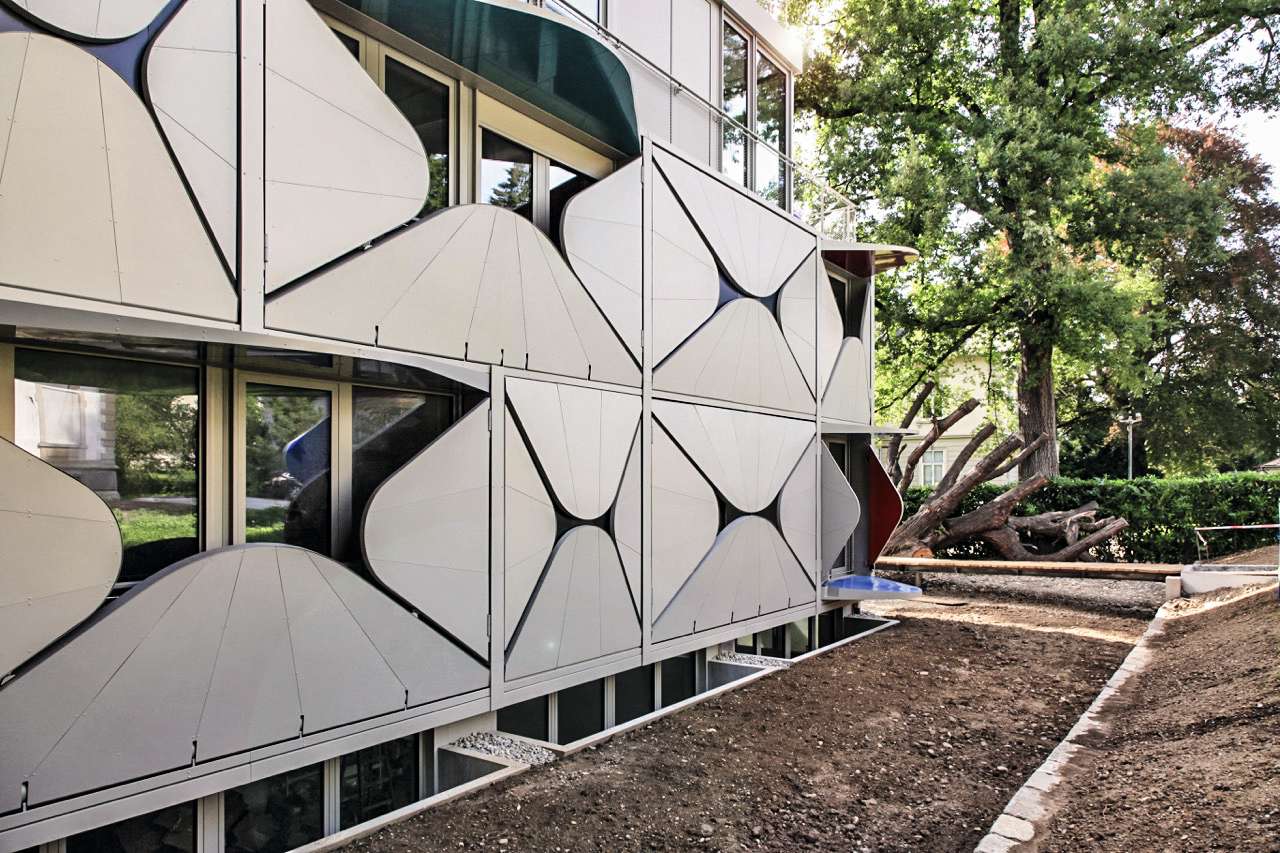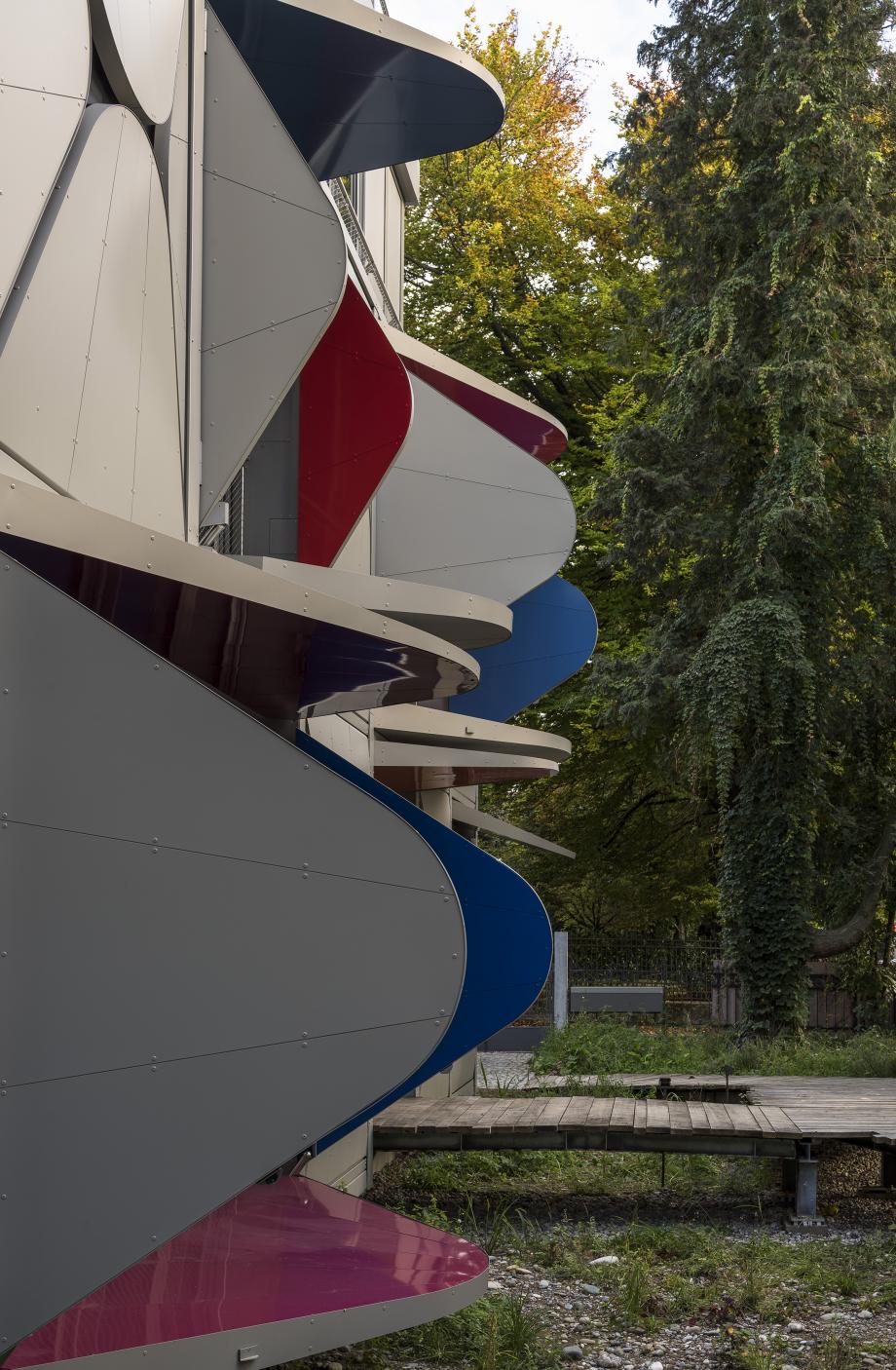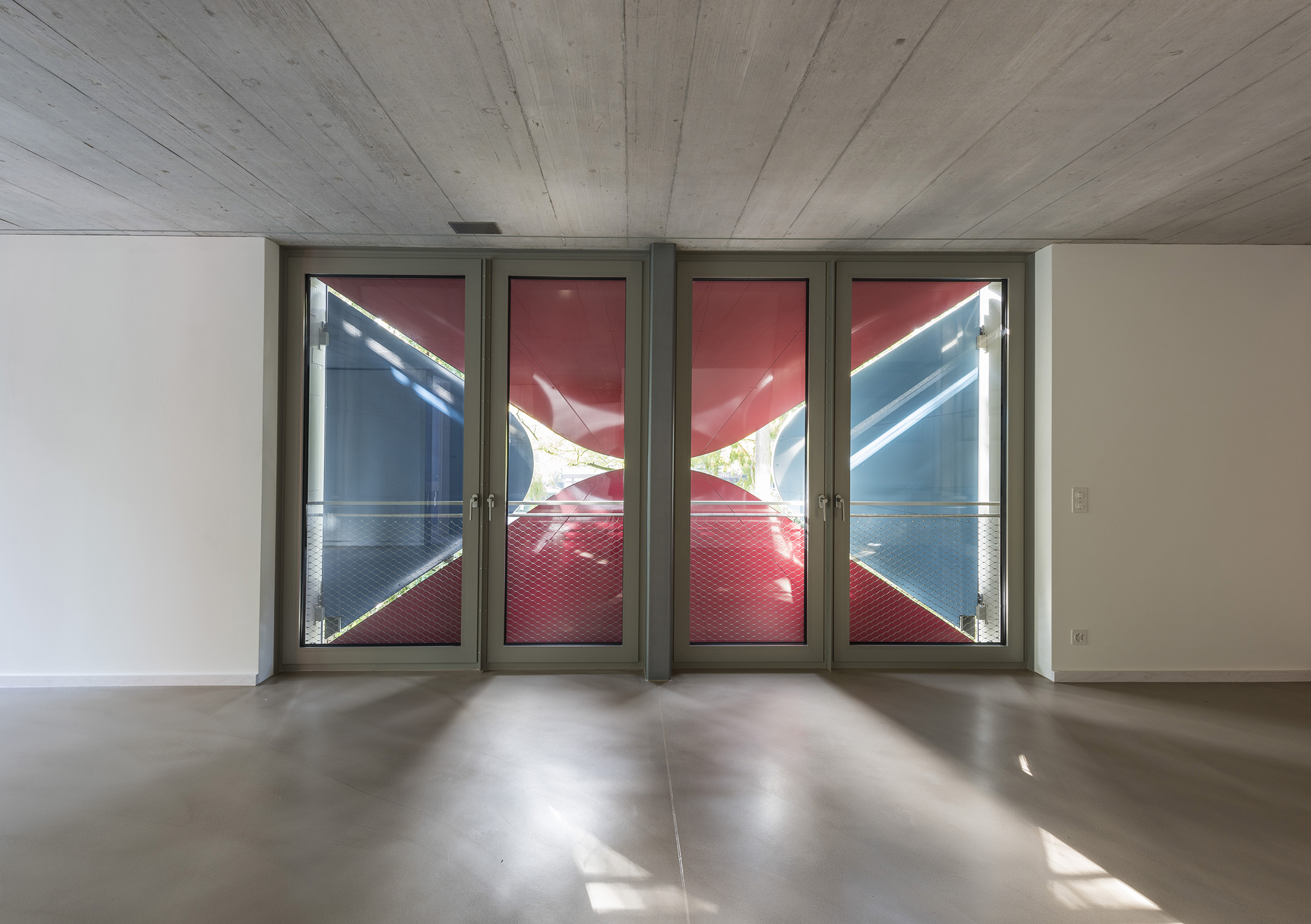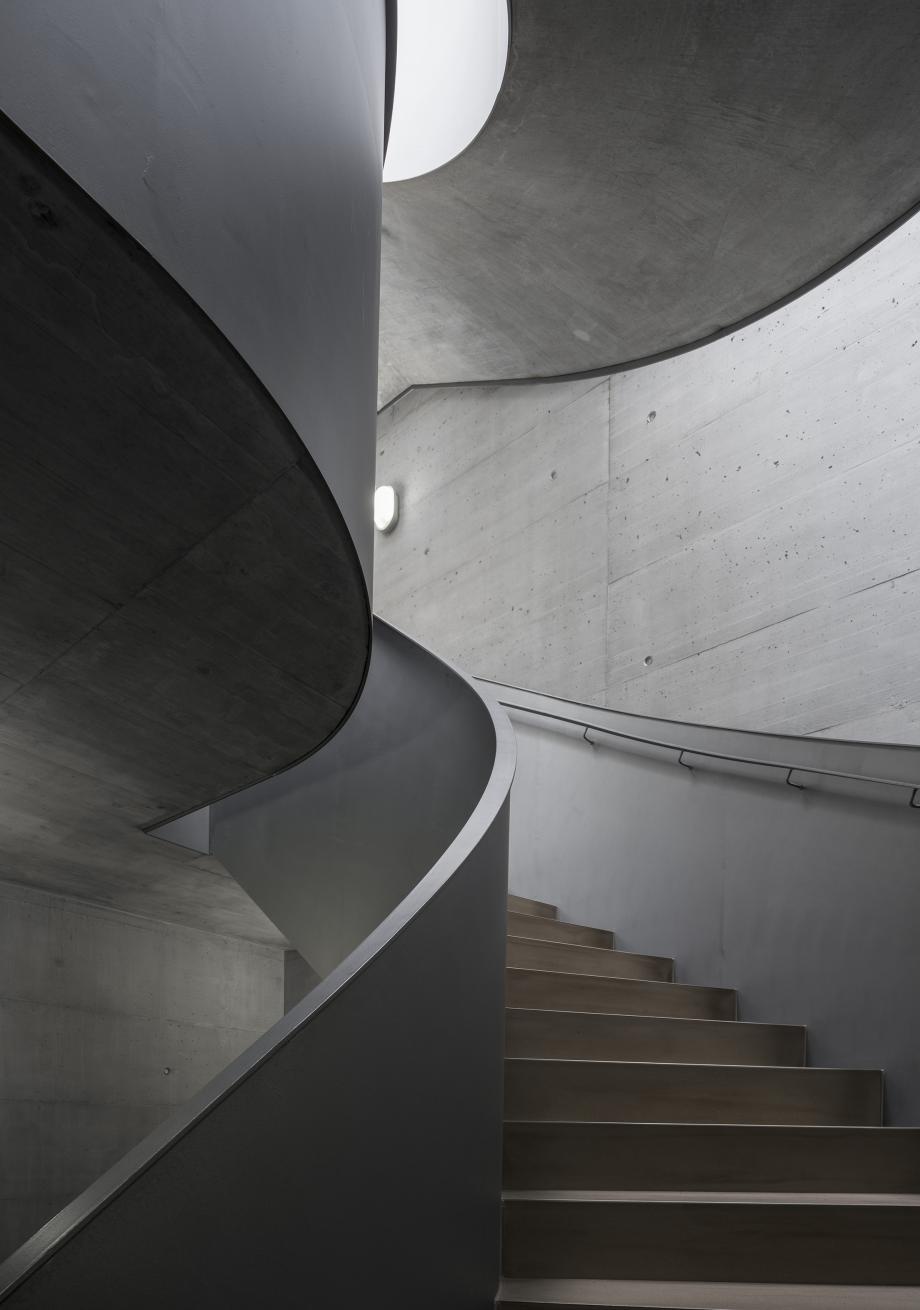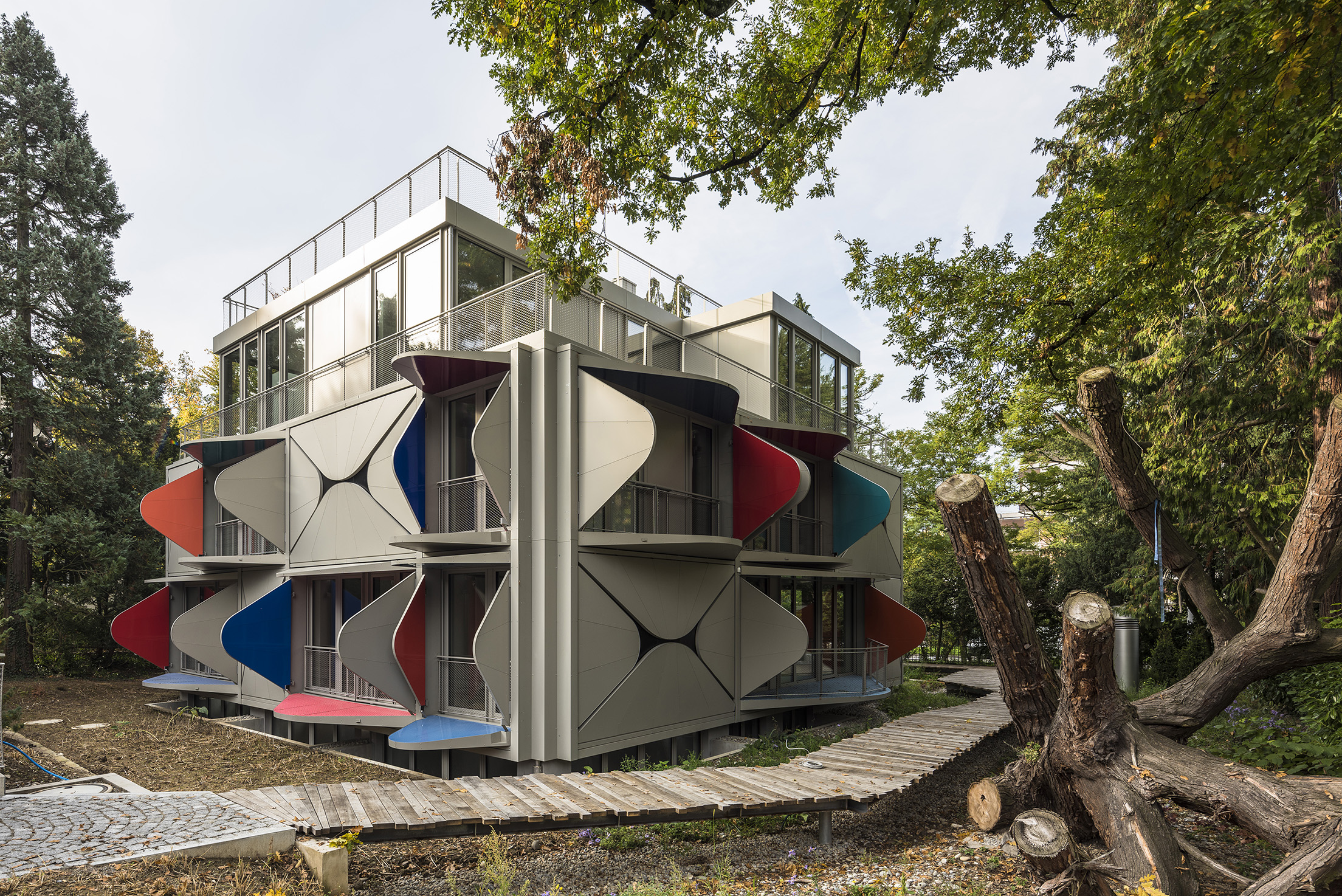In Zurich, the mechanical facade of an unusual house performs an intricate dance, with petal-like louvers opening and closing as balconies pop out and lock into place. Dubbed ‘Ballet Mécanique,’ the five-unit rental structure designed by Basel-based architect Manuel Herz was commissioned by reclusive textile heiress Katrin Bechtler, who lives on an adjoining property.
The point of a rental property is usually to make extra income, but the facade of Ballet Mécanique alone cost $1 million, so it’s more like an elaborate inhabitable art project built just for fun.
Herz notes that it’s not often a client is willing to approve such a complex design. Normally, if he had something fanciful in mind, client-directed revisions would result in a vast simplification of his original vision. But Bechtler clearly isn’t an ordinary client.
“When I met the owner for the first time, she showed me a sculpture on the side: a table that collapsed when its four legs buckle, and then it can raise itself again,” Herz told Swiss-Architects. “This awkward kinetics was fascinating. This ‘mind in the machine,’ the characteristic that something mechanical can have almost a personality, has influenced me.”
The architect was also influenced by Le Corbusier’s Heidi Weber Museum, which is set just a hundred meters away on the same property. He cites its “pavilion-like lightness,” its bright color palette and the combination of steel construction and concrete as sources of inspiration.
The two-story building, which also has an attic level, a rooftop terrace and a basement for studio space, features five rental apartments with sizes between 2.5 to 4.5 rooms. Steel columns are used along the facade for support, but the core and floors are made of reinforced concrete.
The shutters themselves are made of anodized aluminum with a pearly finish on the outside that gives the building a uniform appearance when they’re all closed. But at the press of a button, the shutters open, their colorful insides contrasting with the greenery in the garden.
“The [folding] elements can be operated from the inside and are controlled by motors hidden in the steel structure. Control via motors guarantees a largely silent and synchronous movement. Each apartment is assigned a movable and walk-in balcony. These movable walk-in balconies are based on the same construction and motor control as the folding elements and are complemented by a railing. After complete extension of the folding elements, the railing can be pushed outwards.”
